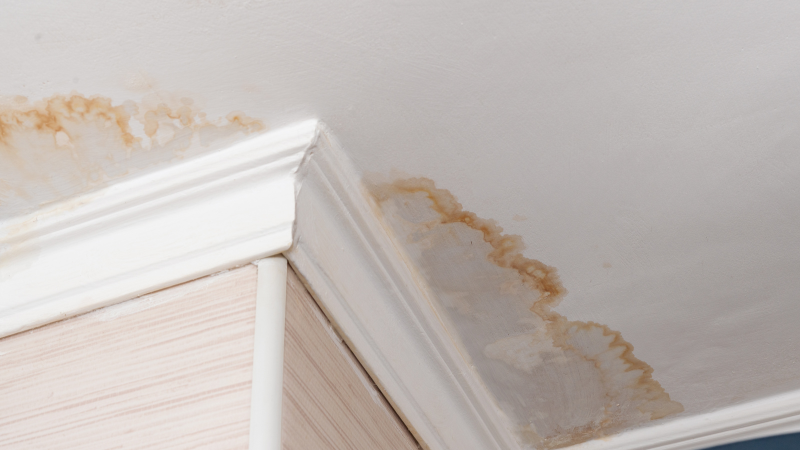The publisher is making a number of great points regarding How to Repair and Prevent Bathroom Water Damage as a whole in this article underneath.

The bathroom is extremely at risk for wet buildup and also prospective water damages because of the regular use of water in it. This article offers simple inspection strategies to aid finding water damages dangers.
The regular use of water in the bathroom makes it exceptionally at risk for damp build-up and potential water damages. By checking it on a regular basis, you can minimize water related damages.
The adhering to collection of evaluations is easy to execute and also ought to be done once in every 3 months in order to maintain your restroom in good shape and also to avoid potential water damages caused by the bath tub, the shower, pipeline joints and also plumbing, sinks, cupboards, and the commode
Do not disregard carrying out these examinations as well as be extensive while executing them. Bear in mind that these simple examinations can conserve you a lot of cash by offering very early indicators for water damage
Sinks and also Cabinets
Sinks and closets are subjected to moisture as well as humidity day-to-day and are usually ignored. Inspect on a regular basis under the sink as well as on the kitchen counter above it. Fix any type of drip in the catch as it may recommend drain troubles. Take a look around the sink, slow-moving draining pipes might suggest an obstructed drain. Change sink seals if they are broken or loosened.
Bathtub as well as Shower
The shower and tub require special focus and upkeep. Check the ceramic tiles and replace if fractured. Ensure that there is no missing out on grout between the floor tiles. Examine as well as replace broken caulking at joints where the wall surfaces meet the floor or the bath tub. Clogged drains pipes and also pipes troubles will certainly prevent the tub from drying out as well as might indicate severe problems underneath the bathtub. Talk to a specialist right away to stop structural damages. Pay attention to discolorations or soft locations around the bathtub wall surfaces as they might indicate an interior leakage.
Plumbing
Signs for water damage are difficult to detect because the majority of pipes are installed inside the walls.
Pay unique attention to flooring as well as wall surfaces moisture as well as discolorations as they may suggest an undetectable plumbing problem. Check dampness degrees in adjacent areas too.
The Toilet
The toilet is a susceptible water joint. Inspect the water lines and also look for leakages around the toilet seat, in the hose, and under the water storage tank. If you detect any signs of wetness on the floor around the bathroom, check for leakages in the toilet edge as well as container seals.
Realize that hanging commode dish antiperspirants raises the chances for clogs.
Water Damage Signs In The Bathroom To Avoid Cleanup
Musty smell
This is one of the easiest signs to catch because musty smells are so odorous. The damp, earthy, moldy smell should be a big red flag. The smell will develop when moisture gets trapped in surfaces, and begins to facilitate mold growth. Leaking pipes under cabinets, inside walls, and behind shower fixtures will cause moisture to stay trapped and not dry, which will lead to mold growth and spread. As soon as you notice any musty smells in your bathroom, have it checked for hidden water damage and cleanup signs.
Visible mold
If the smell isn’t there to give it away, sometimes you will actually see mold growth. Finding mold in your bathroom is a serious problem, because mold is very harmful to your health. By the time mold growth is visible, it also means that water damage has already occurred and been present for some time. The only way the mold problem can be resolved is to find the source of the moisture and get it stopped. To safely and adequately remove mold, you need to have professionals handle the remediation. Do not waste any time in getting mold problems addressed, fixed, and sanitized so that you can protect you and your family from the many respiratory symptoms caused by mold exposure.
Damaged floors
Bathroom floors should be able to withstand some exposure to water while still remaining in good condition. However, when excess exposure or water leaks occur, they will begin to damage even the most water-resistant flooring. If you notice any cracking, bubbling, staining, or warping on your bathroom floors, there is probably a water leak somewhere causing the distortion. If you notice areas of the floor have become softer, or even have a spongy feeling, there is probably damage to the subfloor. Subflooring is typically made up of plywood. When plywood is exposed to water or moisture, it will absorb it. Once it has become saturated, the weight of the excess water will cause the wood to swell and soften. Check the floors in your bathroom frequently to catch any of these sings before they lead to damaged subflooring.
Changes on walls
When water leaks behind walls, it will cause changes in the drywall. Peeling plaster, blistering paint, and soggy wallpaper are all good indicators that excess water is building up behind the wall. Water leaking behind drywall will cause it to swell and be soft to the tough. If you start to notice gaps along the trim of your walls, or where tile meets the wall, it could also be a strong indicator that there is a leak behind the wall. Any changes, distortion, or damage on the walls should be evaluated as soon as you notice it to prevent further water damage and cleanup.

As a person who reads on Looking for Signs of Water Damage in the Bathroom, I was thinking sharing that excerpt was essential. Sharing is good. Helping others is fun. Thanks for going through it.
Request A Quote